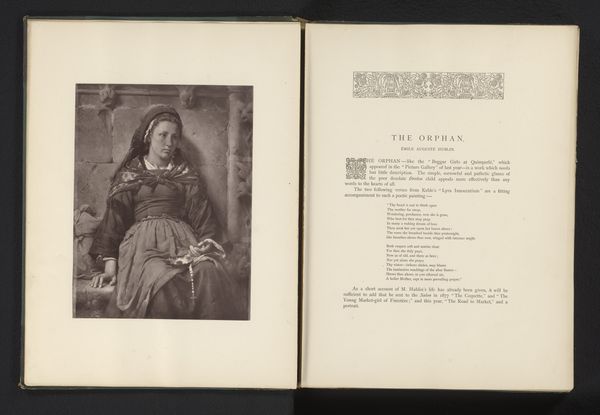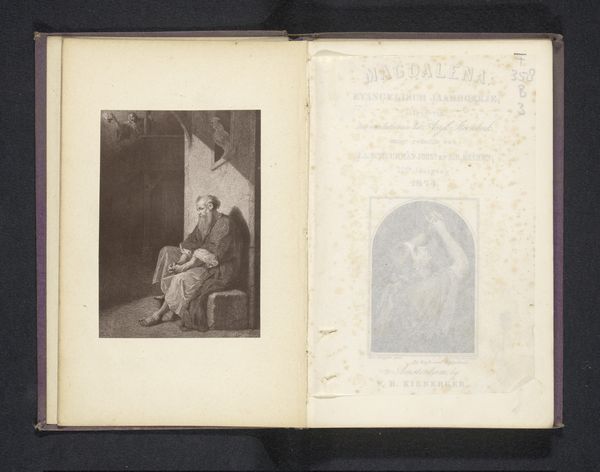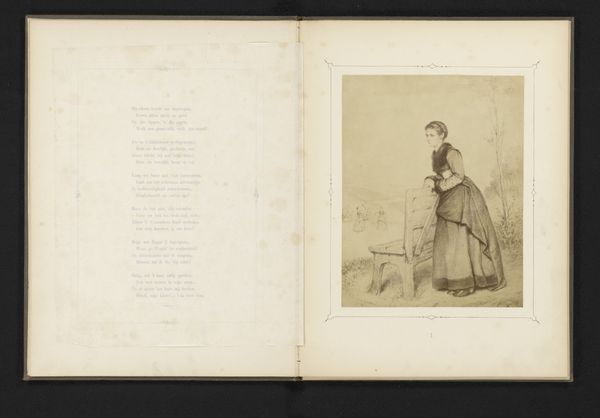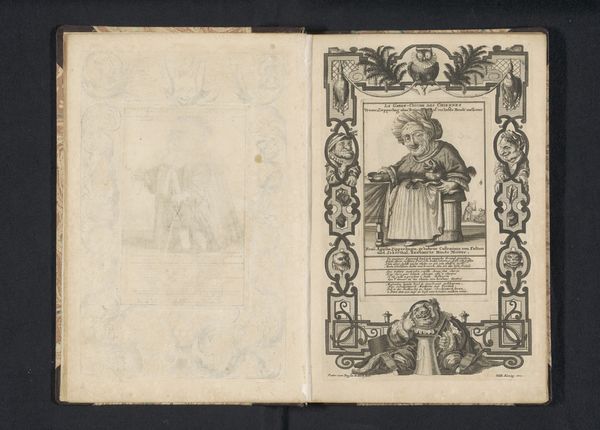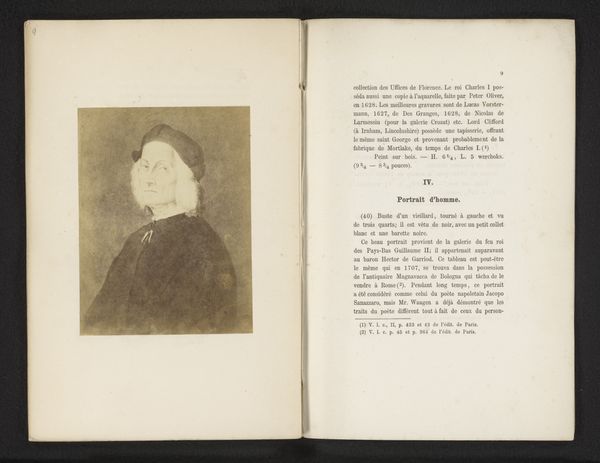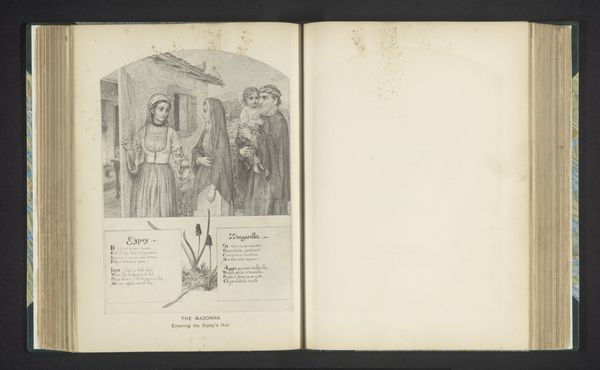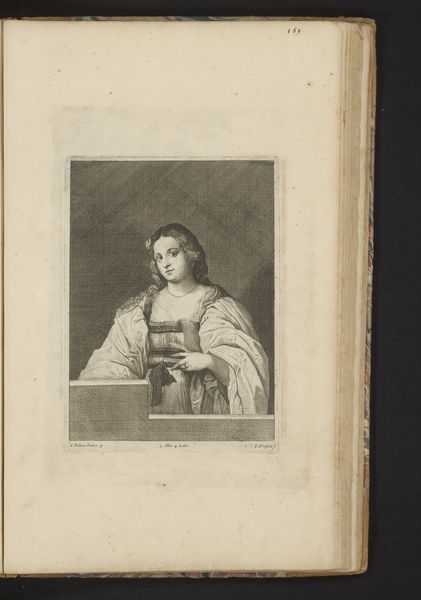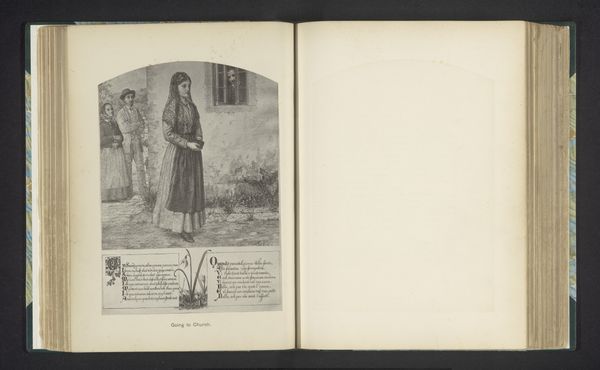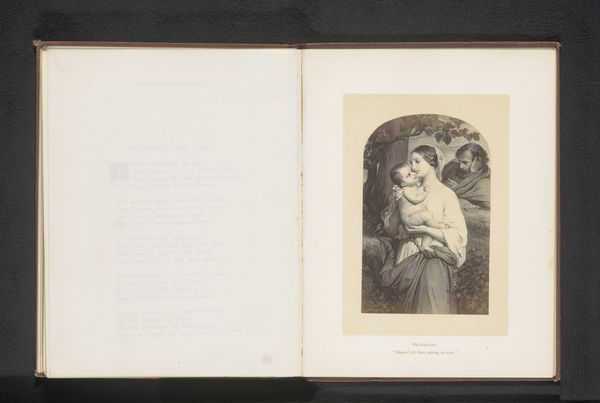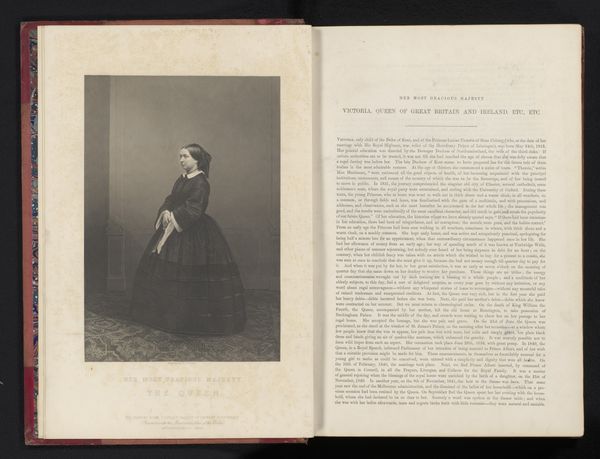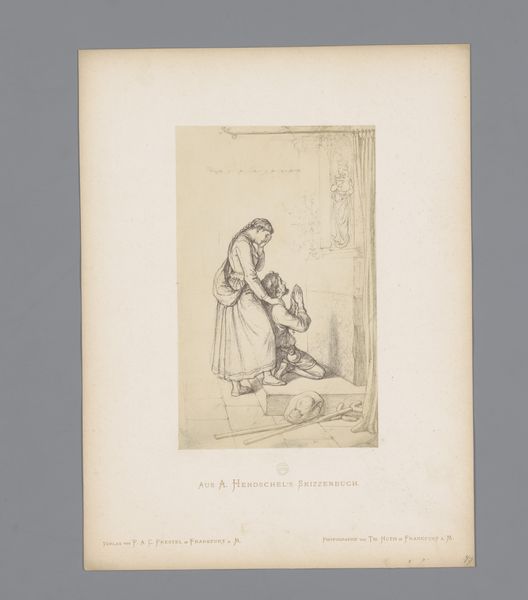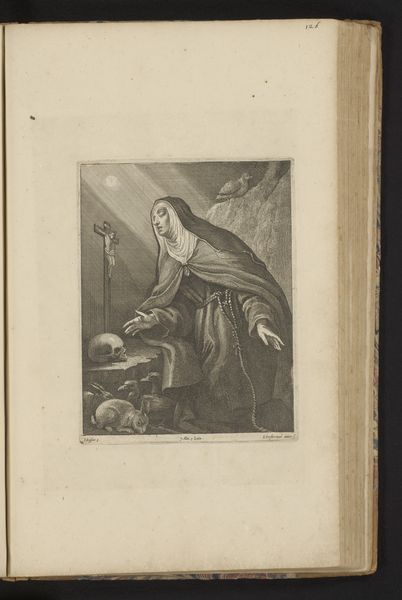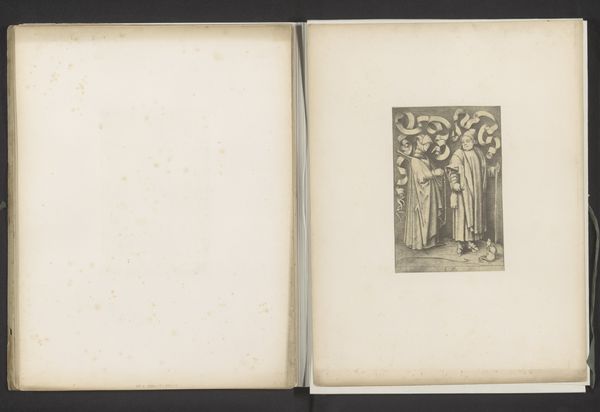
Fotoreproductie van een tekening van een weduwe door Johannes Christiaan d'Arnaud Gerkens before 1863
0:00
0:00
Dimensions: height 232 mm, width 175 mm
Copyright: Rijks Museum: Open Domain
Curator: This is a photographic reproduction of a drawing entitled “Fotoreproductie van een tekening van een weduwe door Johannes Christiaan d'Arnaud Gerkens,” dating from before 1863. Editor: It has such a poignant stillness. The veiled woman, her dark clothing, the desolate landscape—it's undeniably melancholic. You can almost feel the weight of grief. Curator: The very process of creating a photographic reproduction transforms the original drawing. What was once direct mark-making becomes an image mediated through both the artist's hand and the chemical processes of photography. Editor: Absolutely. I'm curious about the paper. It appears aged, perhaps even handmade. The texture would certainly influence the final image and add another layer to its materiality. Curator: Indeed. This artwork offers us a glimpse into 19th-century representations of women and widowhood, common motifs during the Romantic period and provides an insightful look into how such figures were memorialized through the circulation of photography. Editor: There's also a dialogue between fine art and reproduction at play. Photography was still a relatively new medium then, striving for legitimacy in the art world. Reproducing a drawing elevates its perceived artistic value while simultaneously making it accessible to a broader public through the photograph. Curator: And the decision to present the photographic reproduction in an album format reinforces a specific mode of viewing – intimate and personal. These photographs were circulated within distinct social circles, carrying coded visual messages related to mourning rituals and societal expectations. Editor: I find it fascinating to consider the labour involved—not only in the artist's original creation but also in the photographic processes. It’s a tangible link to the historical conditions of both artistic production and societal representation. Curator: Reflecting on its composition and historical context helps deepen our understanding of grief, memory, and representation. It's an important visual document that gives insight to our societal expectations. Editor: Indeed. Analyzing the piece has opened our eyes to the artistic production, the subject’s visuality, and social and sentimental status of that period.
Comments
No comments
Be the first to comment and join the conversation on the ultimate creative platform.

